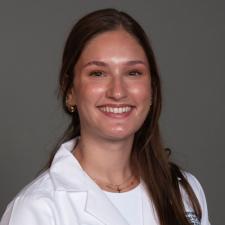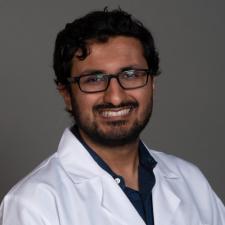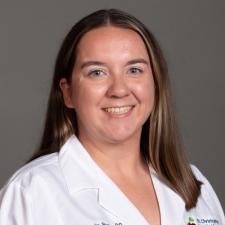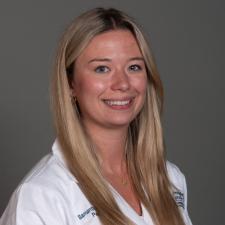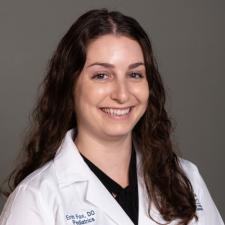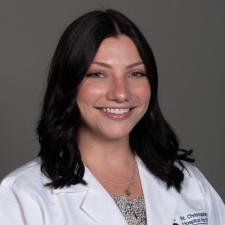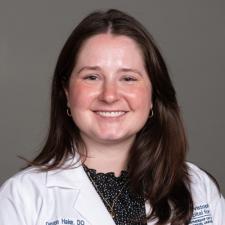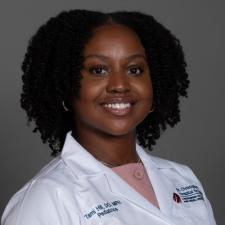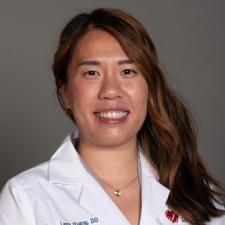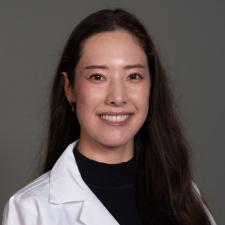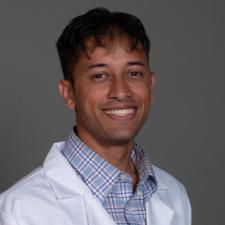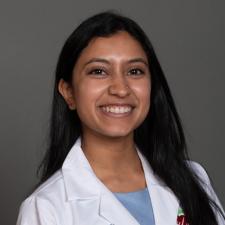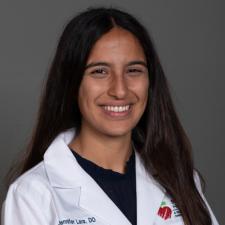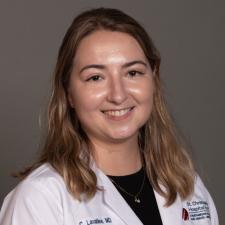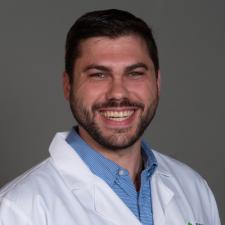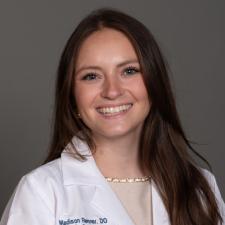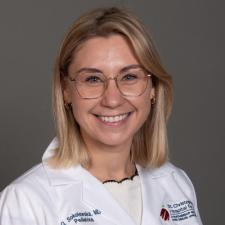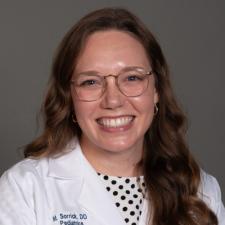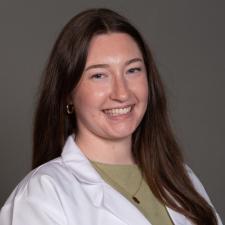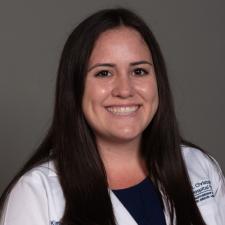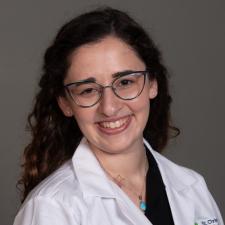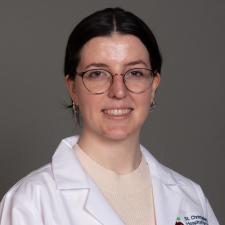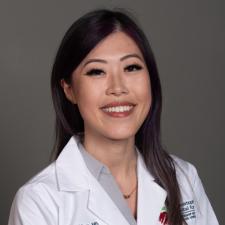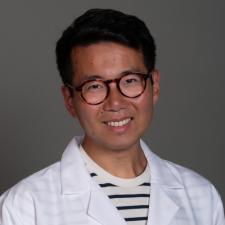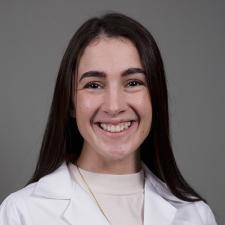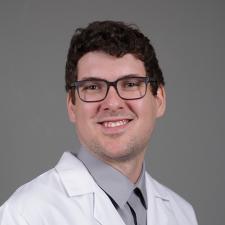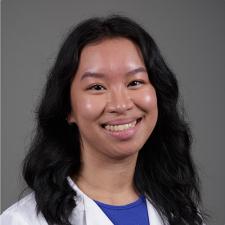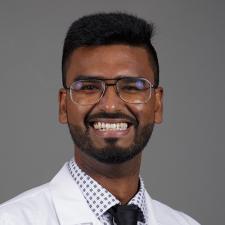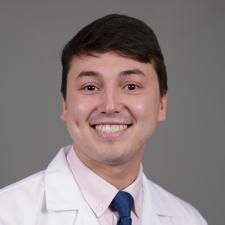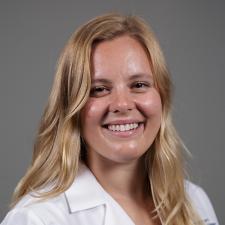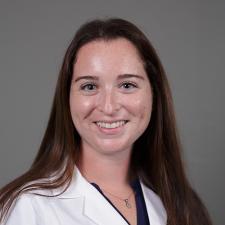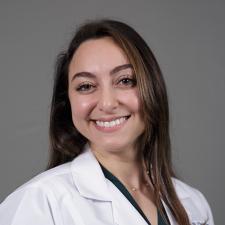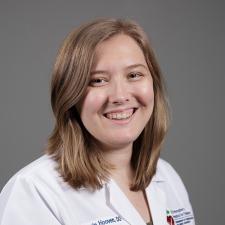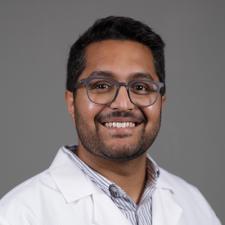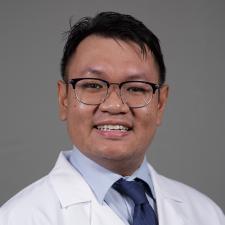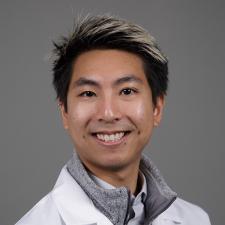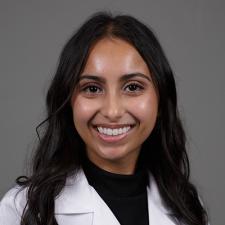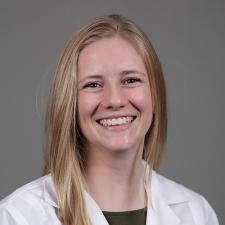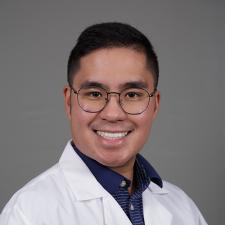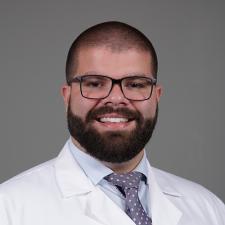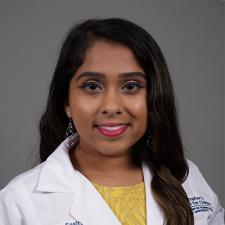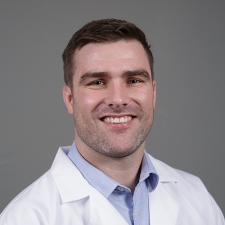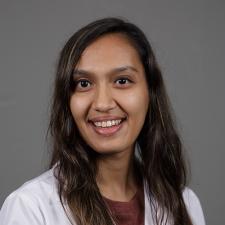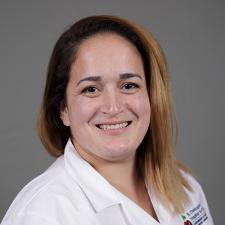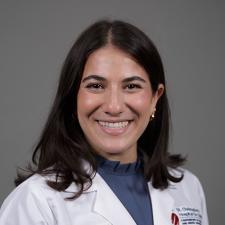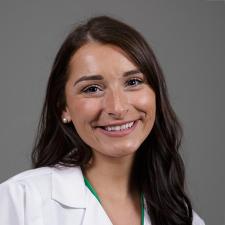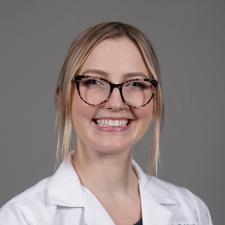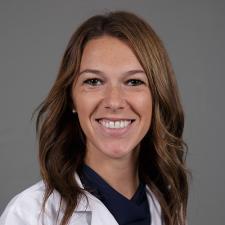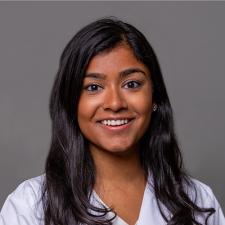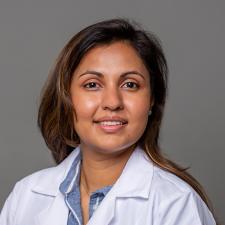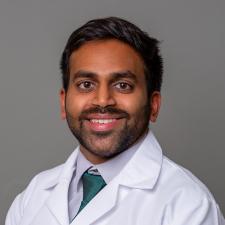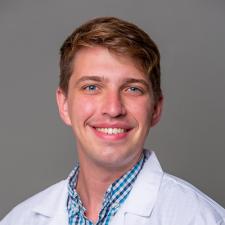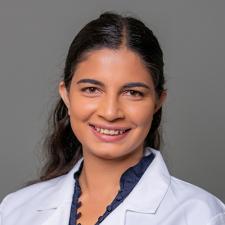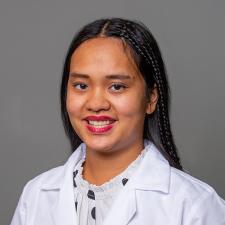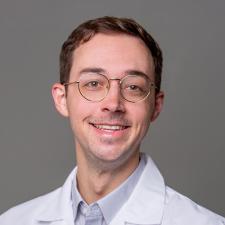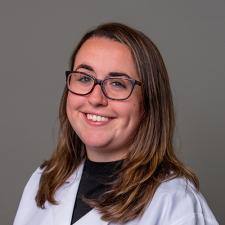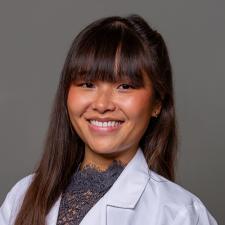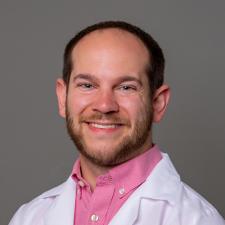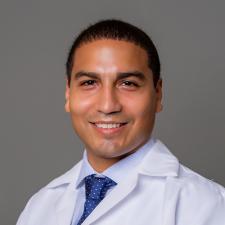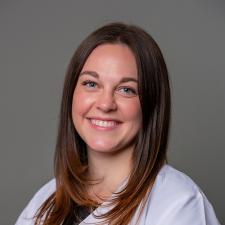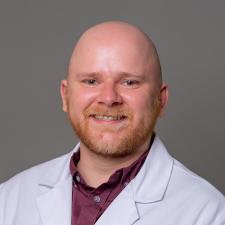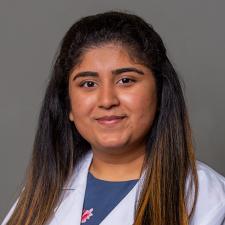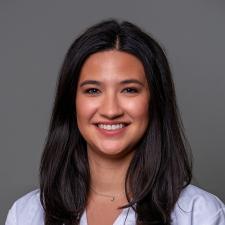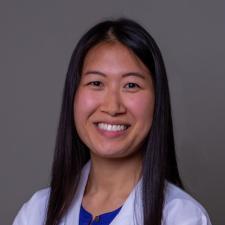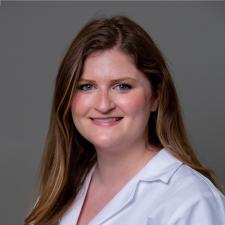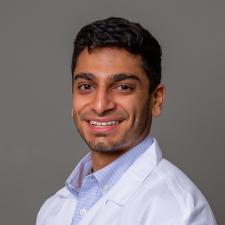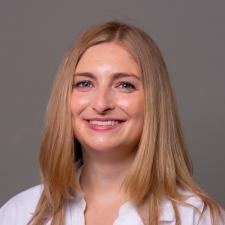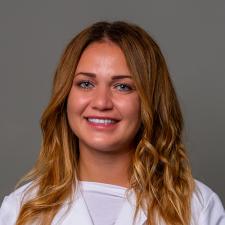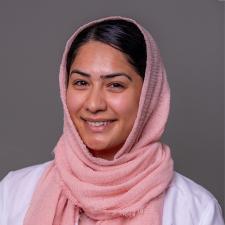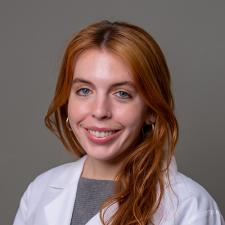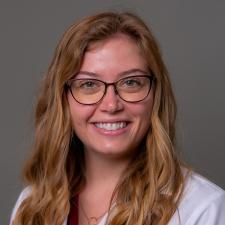Pediatric Level-1 Academic Year
PL-1s can expect to develop both the clinical and technical skills needed to diagnose and treat illnesses and disease in infants, children and adolescents. The cumulative clinical experiences are divided over 13 blocks, each block lasting four weeks.
Below is a description of typical PL-1 rotations, as well as a list of our current interns.
Orientation
PL-1s undergo a paid orientation period (approximately five to seven days) during which they participate in the Pediatric Advanced Life Support Training Program (PALS) as well as Neonatal Resuscitation Program (NRP). Interns are oriented to the use of our electronic medical records systems throughout the hospital, and the general expectations of our training program and individual rotations. Of course, this period also includes a number of class bonding activities and time to meet the rest of the residents!
Inpatient (4-5 blocks)
First-year residents spend up to five blocks on inpatient pediatric services, caring for six to ten patients daily. Interns have the primary responsibility for day-to-day care of patients, as well as for coordination of subspecialty and consultative services. PL-1s are also vital in the education of 3rd year medical students from Drexel University College of Medicine and Lewis Katz School of Medicine at Temple University. Patient progress is discussed daily at family-centered rounds led by the senior resident and pertinent clinical topics discussed with attending physicians throughout the week.
Night Shift (~5-6 weeks)
Each PL-1 spends about 5-6 weeks per year (1 week at a time, Sunday through Friday nights) on the inpatient night shift team. During inpatient rotations, the nighttime PL-1 is paired with a second- or third-year resident supervisor. Hospital medicine attendings are available by phone 24 hours a day. Night shift hours are from 5pm to 7:30am. Weekends are free while on night shift.
Newborn Nursery – Temple University Hospital (4 weeks)
PL-1s attend deliveries and learn how to manage and screen newborns, as well as provide education to new parents and ensure a smooth transition to home.
Emergency Medicine (4 weeks)
During this rotation, the PL-1 will learn how to diagnose and manage acutely ill patients. PL-1s will have excellent opportunities for procedures during this time.
Community Pediatrics (1 block)
Beyond the weekly experience in continuity clinic (see below), PL-1s rotate in an onsite general outpatient pediatrics office, receiving comprehensive exposure to primary care pediatrics. While navigating "sick" appointments, residents also add skills in advocating for patients within the context of social determinants of health and in triaging indications for hospital admissions, referral to subspecialists, and follow-up care.
Advocacy (1 block)
The "advocacy" experience includes various visits to several non-medical settings in the community to gain appreciation for how these organizations contribute to the well-being of children and families. Residents engage in community outreach and will appreciate the external (social, economic, political, environmental, cultural and spiritual) influences on a child's health. Interns prepare and deliver a teaching session related to health equity during this rotation.
Most importantly, residents will gain the skills to become more competent advocates for children and will conceptualize how to partner with community-based organizations to help every child reach his or her potential.
Continuity Clinic (1/2 day weekly)
Each PL-1 participates in his or her own continuity clinic, an ongoing responsibility throughout the three-year training program. In this role, the resident serves as the primary physician for a group of pediatric patients, with supervision and consultation by attending faculty. The goal of the PL-1 is to see at least four patients during each session and prepare at least one 25-minute presentation on a general pediatrics topic for their colleagues.
Subspecialty Elective (1 block)
PL-1s rotate in Gastroenterology and Hematology clinics for early exposure to sub-specialty outpatient care.
Elective (1 block)
The PL-1 will have a choice of electives in a variety of disciplines. Inclusion of electives in the intern year facilitates early exposure to potential future career paths and identification of mentors for those residents considering pursuit of fellowship training or scholarly activities.
Jeopardy (2 weeks)
This rotation, occurring in two 1-week blocks, consists of completing shifts in various areas of the hospital (ER, general pediatrics sick clinic, and others) while being "available" for their classmates in case of emergency, and is combined with vacation.
PL-1 retreat (2 days)
The PL-1 year includes a two-day off-site retreat. The purpose of the retreat is to promote mutual support and a spirit of cooperation. Every member of the PL-1 class is off duty during this time, which allows for some excellent bonding and memory-making.
Professional Development Seminars (2 days)
PL-1s also participate in two full-day professional development seminars. In the fall, they participate in activities that begin to develop their teaching skills as they work closely with medical students. A springtime educational seminar prepares PL-1s for the educational and leadership responsibilities of the PL-2 role. Specifically, interns learn about the following principles: teaching "on the fly," delivering effective feedback, adult learning styles, and applying a scholarly approach to patient care and research projects.
Vacation (4 weeks)
All vacation time is paid and takes place in 1-week or 2-week increments.
Current PL-1 Pediatric Residents
Pediatric Level-2 Academic Year
The second year of training is designed to allow the resident greater responsibility for patient care. The second-year resident has the opportunity to hone clinical skills learned during the PL-1 year and to gain in-depth knowledge in specialized areas of pediatrics. PL-2s also begin serving as supervisors to interns and medical students as they develop experience in leadership and are given training in becoming educators.
Below is a description of typical PL-2 rotations, as well as a list of our current PL-2s.
Developmental and Behavioral Pediatrics (1 block)
The PL-2 will learn to screen for, identify, and manage a variety of behavioral and developmental issues including and associated with autism, ADHD, Cerebral Palsy and various cognitive and neurological disorders. Residents also participate in the SNAP clinic (Sequential Neonatal Assessment Program), which follows premature infants; and they also gain exposure to audiology, physical therapy and occupational therapy services. During this rotation, residents learn in depth about various community resources for children with developmental disabilities.
Adolescent Medicine (1 block)
The PL-2 will learn to identify and manage the medical and psycho-social issues associated with adolescence. The major types of clinic visits include well child, family planning, gynecological issues, and STD screening and treatment.
Intensive Care Unit (1 block)
The PL-2 resident works closely with the attending physicians, critical care fellows, and PL-3s in caring for the most critically ill children in the hospital. The schedule follows the q4 call system.
NICU – St. Christopher's Hospital (2 blocks)
St. Christopher's Hospital (2 blocks) St. Christopher's Hospital for Children is home to an over-30-bed Level IIIV NICU, capable of ECMO. All patients are transferred from outside institutions, some requiring surgical consultation and repair., some critically ill. Each PL-2 serves on the night team for one week during the block.
Emergency Medicine (1 block)
Shifts during the week are typically 8 hours, and up to 12 hours on the weekend. The previous PL-1 rotation allows the PL-2 residents to work efficiently, seeing a higher volume of patients and of higher acuity.
Electives (3 blocks)
Besides the traditional sub-specialty electives, PL-2s may begin creating "flex" electives, which may take the form of individualized experiences (such as "private practice" or "echocardiography") or research blocks. Each PL-2 will be provided with a "call-free" month, which includes no weekend or night shifts and is helpful to residents interested in pursuing off-campus elective experiences.
Continuity Clinic (1/2 day weekly)
The PL-2's patient panel has grown considerably, as has their autonomy in making patient care decisions. PL-2s are expected to see at least five patients during each half day session and to prepare at least three 25-minute general pediatric presentations during the year.
General Pediatrics (1/2 block)
Beyond the weekly experience in continuity clinic, PL-2s rotate in our onsite general outpatient pediatrics sick clinic, receiving comprehensive exposure to primary care pediatrics.
Inpatient (1.5 blocks)
PL-2s will spend time as a senior resident on an inpatient team, as day senior for 2 weeks and night senior for 4 weeks. Working closely with their attending hospitalist, the PL-2 will supervise the PL-1s’ care of general pediatric and subspecialty patients. This serves as an excellent introduction to supervising a team and allows for earlier development of autonomy.
Oncology (1/2 block)
PL-2s complete 2 weeks in the oncology unit to gain understanding of the specialized evaluation and management of childhood cancers.
Jeopardy (2 weeks)
Residents complete shifts in our general pediatrics clinic or emergency department while also being "available" for their classmates in case of emergency.
PL-2 Professional Development Seminars (1 day)
: The second year of training also includes a separate one-day seminar focused on preparing the residents for the educational and leadership components of their upcoming role as a supervising PL-3. During these sessions, clinical responsibilities are covered by the other classes to allow PL-2s to participate fully.
Vacation (4 weeks)
Current PL-2 Pediatric Residents
Pediatric Level-3 Academic Year
Our goals for the third year include continuation of in-depth education in pediatric sub-specialties, development of supervisory and teaching capabilities, increased familiarity with the role of consultants and refinement of general pediatric skills. The PL-3 continues to receive instruction on preparing for life after residency, including attainment of licensure, studying for board exams, and transitioning to the role of fellow or attending physician.
Below is a description of typical PL-3 rotations, as well as a list of our current PL-3s.
Teaching Resident (1 block)
Teaching Resident (1 block): This innovative experience allows PL-3s to become more effective educators via instruction on bedside teaching, formal oral presentations, simulation sessions, feedback and proctoring. Each resident is directly observed performing many teaching interventions and immediately receives feedback on their performance. The PL-3 has the opportunity to practice teaching techniques with interns and third-year medical students in several inpatient and outpatient settings. The techniques learned during this rotation are used to create an effective Senior Conference (an evidence-based, one-hour, grand rounds-style presentation created by each PL-3 on a topic of their choice and presented to the house staff and faculty). This rotation was one of the first of its kind in the nation, created decades ago, and is considered to be the culmination of our professional development curriculum in education.
Inpatient (2 blocks, including 2 weeks as night shift supervisor)
The PL-3 resident serves six weeks as team senior on the inpatient services, including hospital medicine and sub-specialty teams. They supervise interns, sub-interns and medical students and make patient care decisions in conjunction with the attending physician. This serves as an excellent opportunity to sharpen independent decision-making skills, learn team management and facilitate personal growth as an educator. PL-3s also coordinate with the multidisciplinary services and ancillary staff and learn a great deal about the administrative aspects of patient care.
Intensive Care Unit (1 block)
The PL-3 gains experience managing the acutely ill patient, trauma patients, children with cardiovascular malformations and technology dependent patients. The PL3 will participate in responses to codes and will serve as the team leader on the rapid response team, which will respond to acutely ill patients throughout the hospital. The call schedule follows the traditional q4 system.
Elective (4 blocks)
PL-3s complete the ACGME-required 7 sub-specialty electives and may also participate in individually-designed "flex" electives, such as research or other creative experiences. A "call free" month is also provided in the third year.
Continuity Clinic (1/2 day weekly)
The third year is bittersweet. While the patients that you've cared for are growing up right in front of your eyes, they discover that their beloved doctor will soon be moving on to the next stage in their career. PL-3s typically deliver at least three 25-minute general pediatrics presentations per year to their fellow residents and clinic attendings, and complete approximately seven patient visits per half-day session.
Pathway Experiences
PL-3s spend one block in an individualized "pathway" block, based on their chosen pathway and career directions, as well as completing one additional month in an intensive care or surgical setting. Please see the individualized curriculum for more information.
Vacation (4 weeks)

